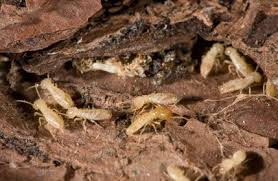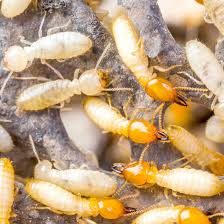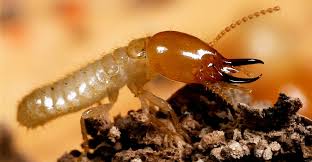The Ultimate Guide To Termite Control Certificate
Biological control is recorded around 300 AD in China, when colonies of weaver ants, Oecophylla smaragdina, were intentionally put in citrus plantations to control beetles and caterpillars.5 Additionally in China, ducks were utilized in paddy fields to consume insects, as illustrated in ancient cave art. In 1762, an Indian mynah was introduced to Mauritius to control locusts, and about the exact same time, citrus trees in Burma were connected with bamboos to allow ants to pass between them and assist control caterpillars.

Biological pest control is a way of controlling pests like insects and mites by using other organisms.8 It relies on predation, parasitism, herbivory or other natural mechanisms, but normally also involves an active human management role. Classical biological control involves the introduction of natural enemies of the insect which are bred in the laboratory and introduced into the environment.
Ideally, the released organism will strain and survive, and provide long-term control.9 Biological control can be an important component of an integrated pest management programme. .

What Does Termite Control Certificate Mean?
For instance: mosquitoes are often controlled by putting Bt Bacillus thuringiensis ssp. Israelensis, a bacterium which infects and kills mosquito larvae, in local water sources.10
Mechanical pest control is the use of hands-on techniques as well as simple equipment and devices, that provides a protective barrier between plants and insects. This is referred to as tillage and is one of the earliest methods of weed control in addition to being used for pest control; wireworms, the creatures of the common click beetle, are very destructive pests of newly ploughed grassland, and repeated cultivation exposes them to the birds and other predators which feed on them.11.
Crop rotation can help to control insects by depriving them of their host plants. It's an important strategy in the control of corn rootworm, and has decreased early season incidence of Colorado potato beetle by up to 95 percent.12
The Basic Principles Of Termite Control Certificate
A trap crop is a crop of a plant that attracts insects, diverting them from nearby plants.13 Pests aggregated on the trap crop can be easily controlled using pesticides or other methods.14 But trap-cropping, on its own, has often neglected to cost effectively reduce pest densities on large commercial scales, without the use of pesticides, possibly due to the pests' ability to spread back into the main field.14.
Pesticides are applied to crops by agricultural aircraft, tractor-mounted crop sprayers or as seed dressings to control pests. But successful control by pesticides is not easy; the ideal formulation has to be chosen, the timing is often critical, the method of application is important, sufficient coverage and retention on the harvest are necessary.
This is very important in countries where there are natural reservoirs of pests and their enemies in the countryside surrounding plantation crops, and such co-exist in a delicate balance. Often in less-developed countries, the crops are well adapted to the local situation and no pesticides are needed. Where progressive farmers are using fertilisers to grow enhanced additional resources crop varieties, these are often more susceptible to pest damage, but the indiscriminate application of pesticides might be detrimental in the longer term.15.
The 8-Minute Rule for Termite Control Centurion
The efficacy of chemical pesticides tends to diminish over time. That is because any organism which manages to survive the initial application will pass on its genes to its offspring and a resistant strain is going to be developed. In this manner, some of the most serious pests have developed resistance and therefore are no longer killed by pesticides which used to kill their ancestors.
